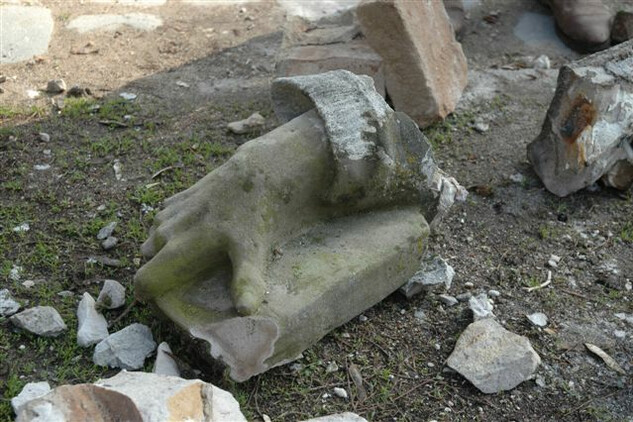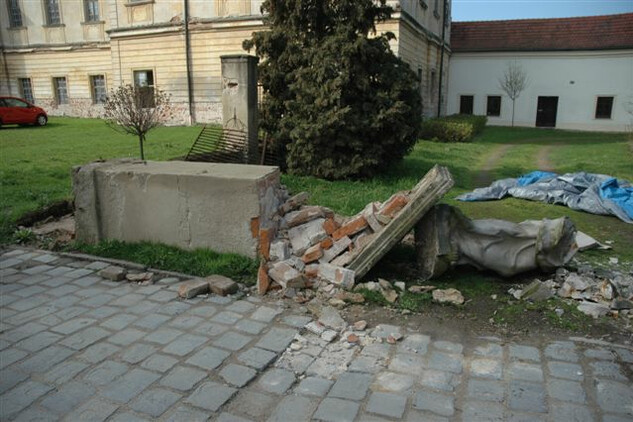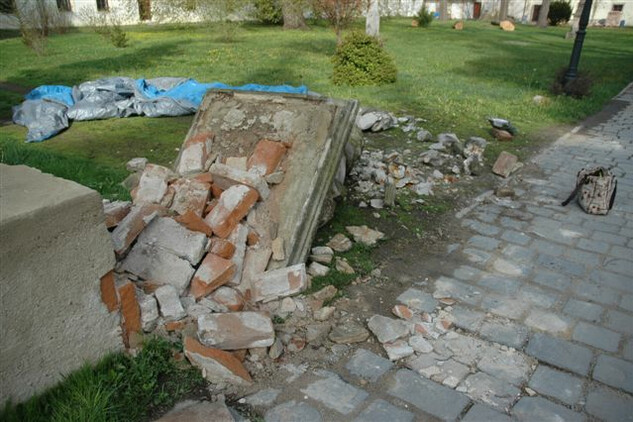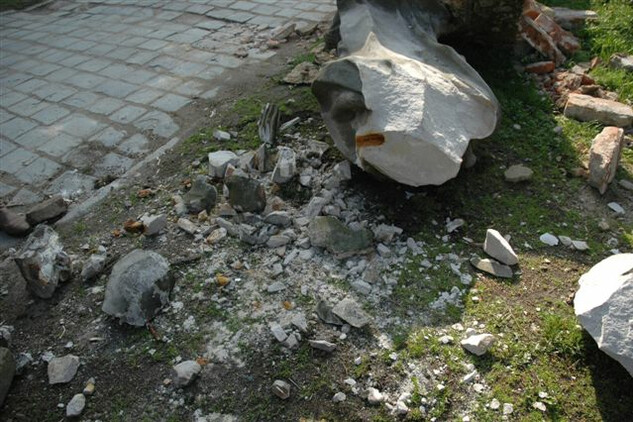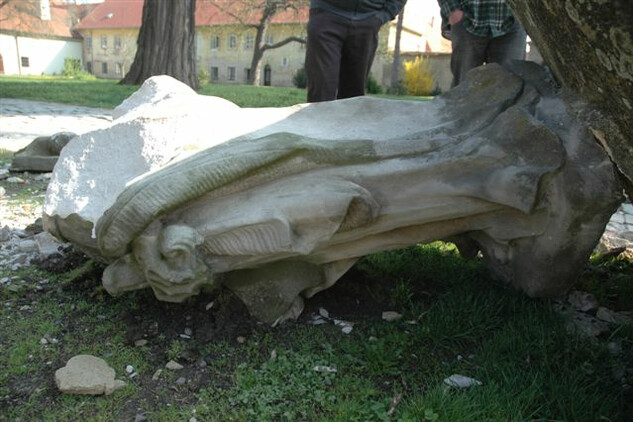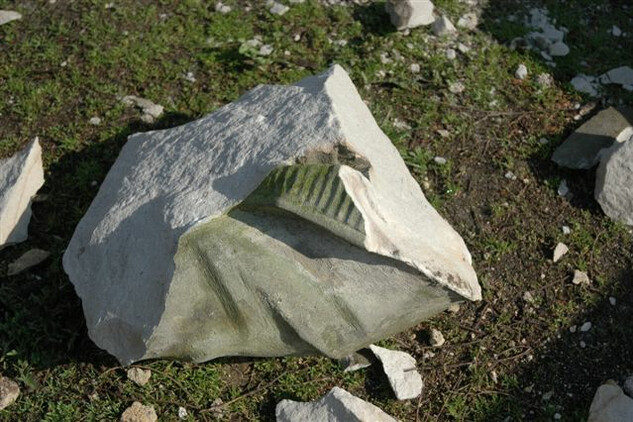The sculpture of St. Paul, made by sculptor Jan Adam Nesmann in 1761, was originally installed on the Rajhrad bridge, together with six other sculptures of the same author. Later, the sculptures were moved to the monastery grounds, and installed in the alcoves in the towers at the main church façade. Since the middle of the 19th century, they have been standing on brick pillars flanking the internal gate at the monastery courtyard.
St. Paul’s sculpture was severely damaged due to a fall, including its pillar. It broke down to hundreds of fragments, a part of it was completely crushed, and the only part that remained whole was the torso of the lower body, up to the waist. The thorough examination and identification of the fragments proved that the sculpture was damaged at least twice in the past, and that the renovation technique wasn’t the best applicable. Based on these findings, the senior restorer Zdeněk Kovářík faced quite a challenge: to decide upon the general concept of restoration. Thanks to him, the sculpture wasn’t just replaced by a copy – due to immense and ongoing effort, he managed to identify a great number of original fragments, so the difficult restoration could begin.
Thorough preparation was necessary before the restoration, including the search for comparisons and analogies that enabled a better understanding of the works by J. A. Nesmann, as well as his teacher Johann Georg Schauberger and his co-workers. It was difficult to choose for the suitable restoration technology, especially with regards to previous restorations, and also for the suitable material for new parts. After the tests, the experts opted for hydraulic lime putty, with high resilience in acid, and high open porosity. Given the number of small fragments, the number of new parts, and surfaces of different colors, it was also necessary to consider the color unification of the sculpture. For this purpose, the tests of binding agents were prepared in cooperation with the Institute of Theoretical and Applied Mechanics of the Czech Academy of Sciences, as well as petrographic analysis of the original material. Only then it was possible to continue with the restoration.
Thanks to the responsible approach and methodology, the restorer managed to preserve as much authentic material as possible, despite the severe damage of the sculpture. After detailed study of similar artworks, it was possible to imitate the author’s style and original design of the artwork. All restoration works were expertly documented and included in the thorough project documentation.
Nominated for the Jihomoravský Region by the regional center in Brno
The restorer Zdeněk Kovářík was nominated for the National Heritage Institute Prize, category: Heritage Restoration.











